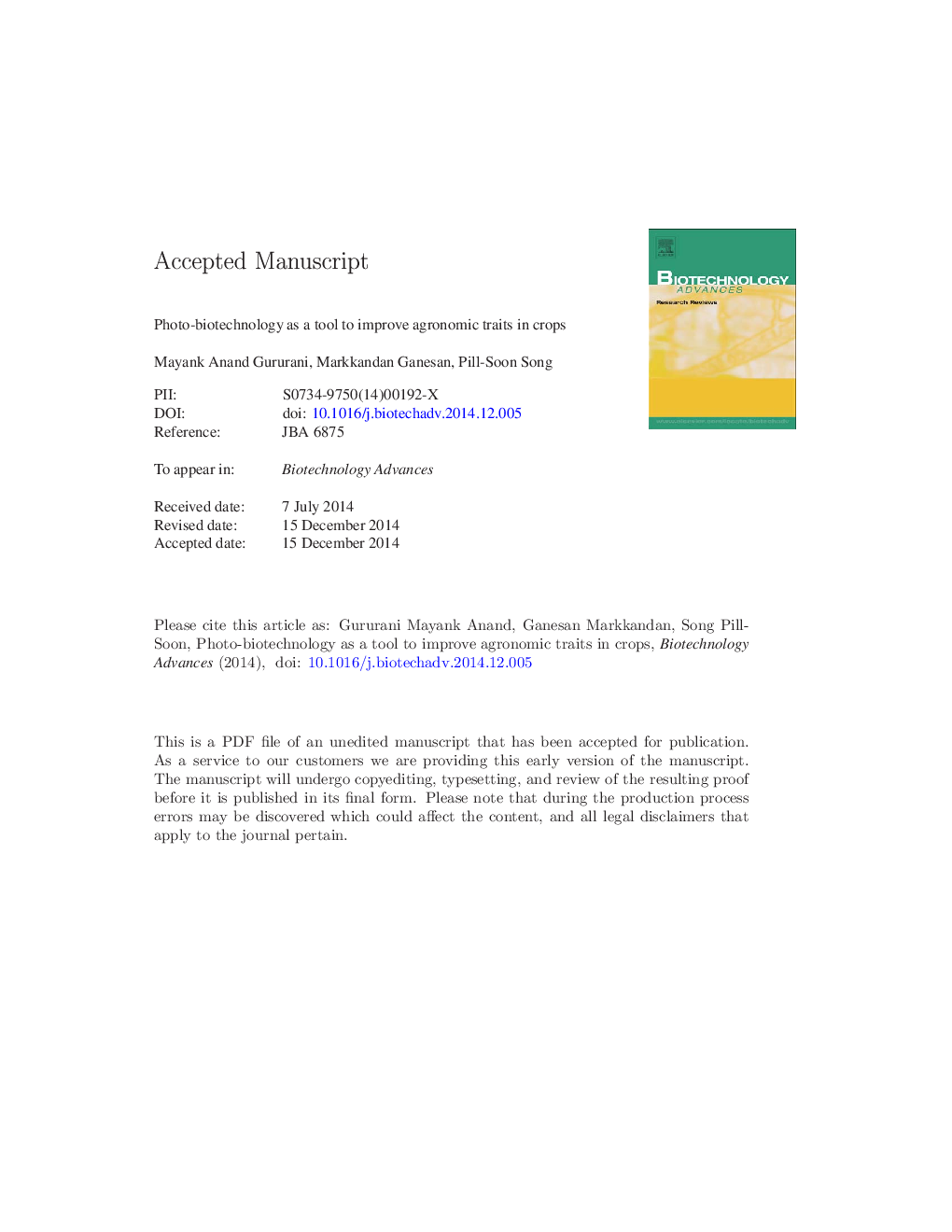| Article ID | Journal | Published Year | Pages | File Type |
|---|---|---|---|---|
| 10231482 | Biotechnology Advances | 2015 | 31 Pages |
Abstract
Phytochromes are photosensory phosphoproteins with crucial roles in plant developmental responses to light. Functional studies of individual phytochromes have revealed their distinct roles in the plant's life cycle. Given the importance of phytochromes in key plant developmental processes, genetically manipulating phytochrome expression offers a promising approach to crop improvement. Photo-biotechnology refers to the transgenic expression of phytochrome transgenes or variants of such transgenes. Several studies have indicated that crop cultivars can be improved by modulating the expression of phytochrome genes. The improved traits include enhanced yield, improved grass quality, shade-tolerance, and stress resistance. In this review, we discuss the transgenic expression of phytochrome A and its hyperactive mutant (Ser599Ala-PhyA) in selected crops, such as Zoysia japonica (Japanese lawn grass), Agrostis stolonifera (creeping bentgrass), Oryza sativa (rice), Solanum tuberosum (potato), and Ipomea batatas (sweet potato). The transgenic expression of PhyA and its mutant in various plant species imparts biotechnologically useful traits. Here, we highlight recent advances in the field of photo-biotechnology and review the results of studies in which phytochromes or variants of phytochromes were transgenically expressed in various plant species. We conclude that photo-biotechnology offers an excellent platform for developing crops with improved properties.
Keywords
Related Topics
Physical Sciences and Engineering
Chemical Engineering
Bioengineering
Authors
Mayank Anand Gururani, Markkandan Ganesan, Pill-Soon Song,
